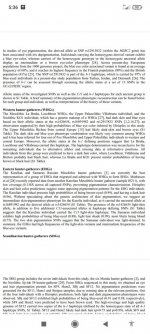redithater
Junior Member
- Messages
- 3
- Reaction score
- 1
- Points
- 0
sorry if the question is stupid. i come recently from a debate with some guy claiming that blondism in europe stemmed from Scandinavian hunter gatherers, who spread throughout europe along with the group I1. he speculated that blondism spread either before the steppe invasion or during the viking age. his evidence for this was the maps showing high correlation between I1 haplogroup spread in europe and the spread of blondism. i said that blondism was selected for and spread with they yamnaya and derived populations/cultures, and that before their invasion/spread blondism, while it existed in europe, it was not as widespread. we went back and forth for a while and came to a stalemate
so i am asking here; are I1 carrying people responsible for the spread of blondism in pre-modern Europe? if yes, when did this happen and how do the steppe people enter in here? if not, why does blondism correlate so highly with the cline of I1 in europe?
so i am asking here; are I1 carrying people responsible for the spread of blondism in pre-modern Europe? if yes, when did this happen and how do the steppe people enter in here? if not, why does blondism correlate so highly with the cline of I1 in europe?




